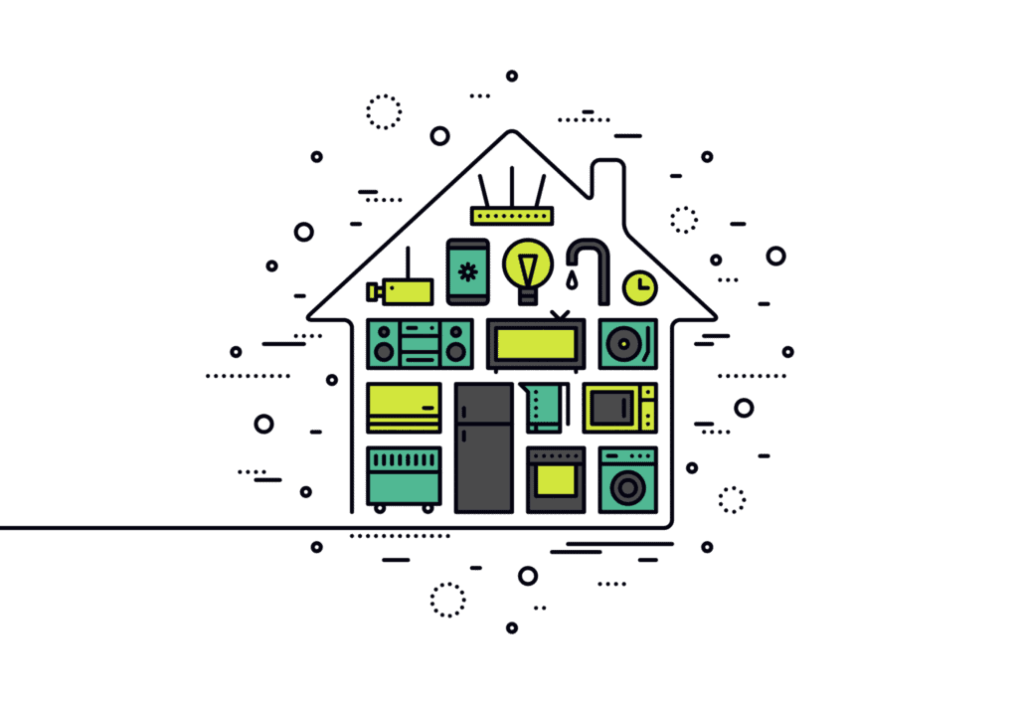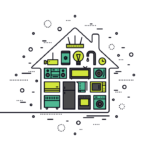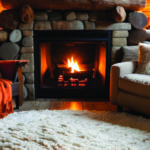An energy audit is a powerful tool for identifying areas in your home where energy is being wasted, which can lead to higher utility bills and a less comfortable living space. While hiring a professional energy auditor can be costly, a DIY energy audit can help you spot inefficiencies in your home without spending a lot of money. By taking a few simple steps, you can identify and correct issues that are draining energy and costing you money.
In this article, we’ll walk you through the process of conducting your own energy audit and give you practical tips to improve your home’s energy efficiency. Whether you’re looking to lower your energy bills or reduce your environmental impact, a DIY energy audit is a great first step.
1. Inspect Insulation and Sealing
One of the most common culprits of energy loss in a home is inadequate insulation and sealing. To start your DIY energy audit, check your attic, walls, and floors to ensure that they are properly insulated. Insulation helps keep your home warm in the winter and cool in the summer by reducing heat transfer.
Here’s how to check:
- Attic: If you can access your attic, check for gaps or thin insulation. Make sure it’s thick enough to prevent heat from escaping. If you notice any gaps or compressed insulation, this may be a sign that you need to add more insulation.
- Windows and Doors: Walk around your home and feel for drafts around windows and doors. Use a candle or incense stick to detect airflow. If the flame flickers near the edges, you likely have leaks. Seal any gaps with weather stripping or caulking to prevent air from escaping.
- Outlets: Even electrical outlets can contribute to energy loss. Use foam outlet gaskets to seal outlets on exterior walls, which can help prevent drafts and improve efficiency.
2. Evaluate Your Heating and Cooling Systems
Your HVAC system plays a significant role in your home’s energy use. Checking its efficiency can save you a lot of energy and money in the long run.
Here’s how to evaluate your system:
- Air Filters: Dirty or clogged air filters reduce airflow and cause your HVAC system to work harder. Replace air filters regularly to ensure optimal efficiency.
- Thermostat Settings: Check your thermostat settings. Make sure you’re using a programmable thermostat to avoid heating or cooling an empty house. Set the temperature lower in the winter and higher in the summer when you’re away or sleeping.
- Ductwork: Inspect the ducts for any visible gaps or leaks, especially in the attic or basement. If you find any leaks, seal them with mastic or metal tape (not duct tape), which can help prevent warm or cool air from escaping and improve the overall efficiency of your system.
3. Check for Lighting Inefficiencies
Lighting is another area where energy inefficiencies often go unnoticed. Traditional incandescent bulbs use far more energy than LED bulbs, which provide the same amount of light but consume significantly less power.
Here’s what you can do:
- Switch to LED Bulbs: Replace all incandescent or halogen bulbs with energy-efficient LED bulbs. They use up to 75% less energy and can last 25 times longer.
- Turn Off Lights When Not in Use: Get into the habit of turning off lights when you leave a room. Consider using motion sensor lights in areas like hallways or bathrooms to ensure lights are only on when needed.
- Use Natural Light: Take advantage of daylight by opening curtains and blinds during the day to reduce the need for artificial lighting.
4. Examine Appliances for Energy Wastage
Old and inefficient appliances are a major source of wasted energy in many homes. During your DIY energy audit, take stock of your major appliances—refrigerators, dishwashers, washing machines, and dryers—and assess their energy efficiency.
Here’s how to evaluate your appliances:
- Energy-Efficient Models: Look for appliances that have an Energy Star rating. These models use less energy and can significantly reduce your energy bills.
- Unplug Devices: Many electronics continue to consume power even when turned off—this is called “phantom load.” Unplug devices when not in use, or use smart power strips to cut power to multiple devices at once.
- Refrigerator Efficiency: Make sure your refrigerator and freezer are running efficiently by cleaning the coils and ensuring the doors close tightly. Set the fridge temperature to 37°F and the freezer to 0°F to maximize energy efficiency.
5. Evaluate Water Heating and Usage
Water heating is another area where energy can be wasted if your system isn’t running efficiently. Your water heater accounts for a large portion of your home’s energy consumption, so it’s important to check for inefficiencies here.
Here’s what you can do:
- Lower Water Heater Temperature: Set your water heater to 120°F. Any higher, and you’re wasting energy by heating water to a temperature that’s hotter than necessary for most household needs.
- Insulate Pipes and Water Heater: Insulating your water heater and pipes can prevent heat loss, making your water heater more efficient. You can purchase an insulating jacket for the tank and foam pipe insulation for hot water pipes.
- Fix Leaky Faucets: Even a small drip can waste a significant amount of water over time. Check for leaky faucets and repair them to prevent water wastage.
Conclusion
Conducting a DIY energy audit is a cost-effective way to identify inefficiencies in your home and take action to reduce your energy consumption. By inspecting insulation, evaluating your HVAC system, switching to LED lighting, upgrading appliances, and optimizing water heating, you can make simple changes that add up to big savings. If you’re looking to further reduce your costs, it’s also worth checking local cypress electricity rates to ensure you’re getting the best possible deal on your energy plan.
A DIY energy audit doesn’t require specialized knowledge, and many of the solutions are inexpensive or free. Start small by addressing the easiest issues, and gradually work your way toward larger improvements. Not only will you save money on your utility bills, but you’ll also contribute to a more sustainable, energy-efficient home.







